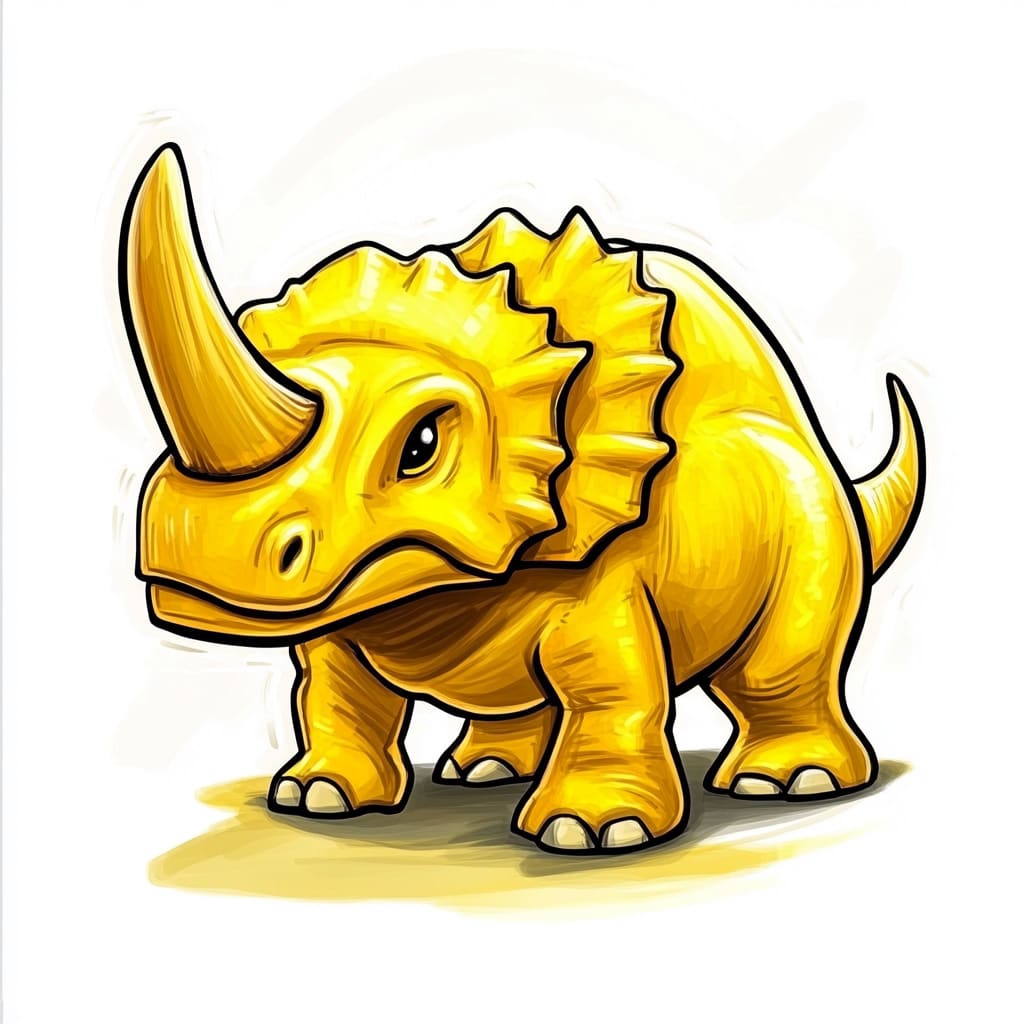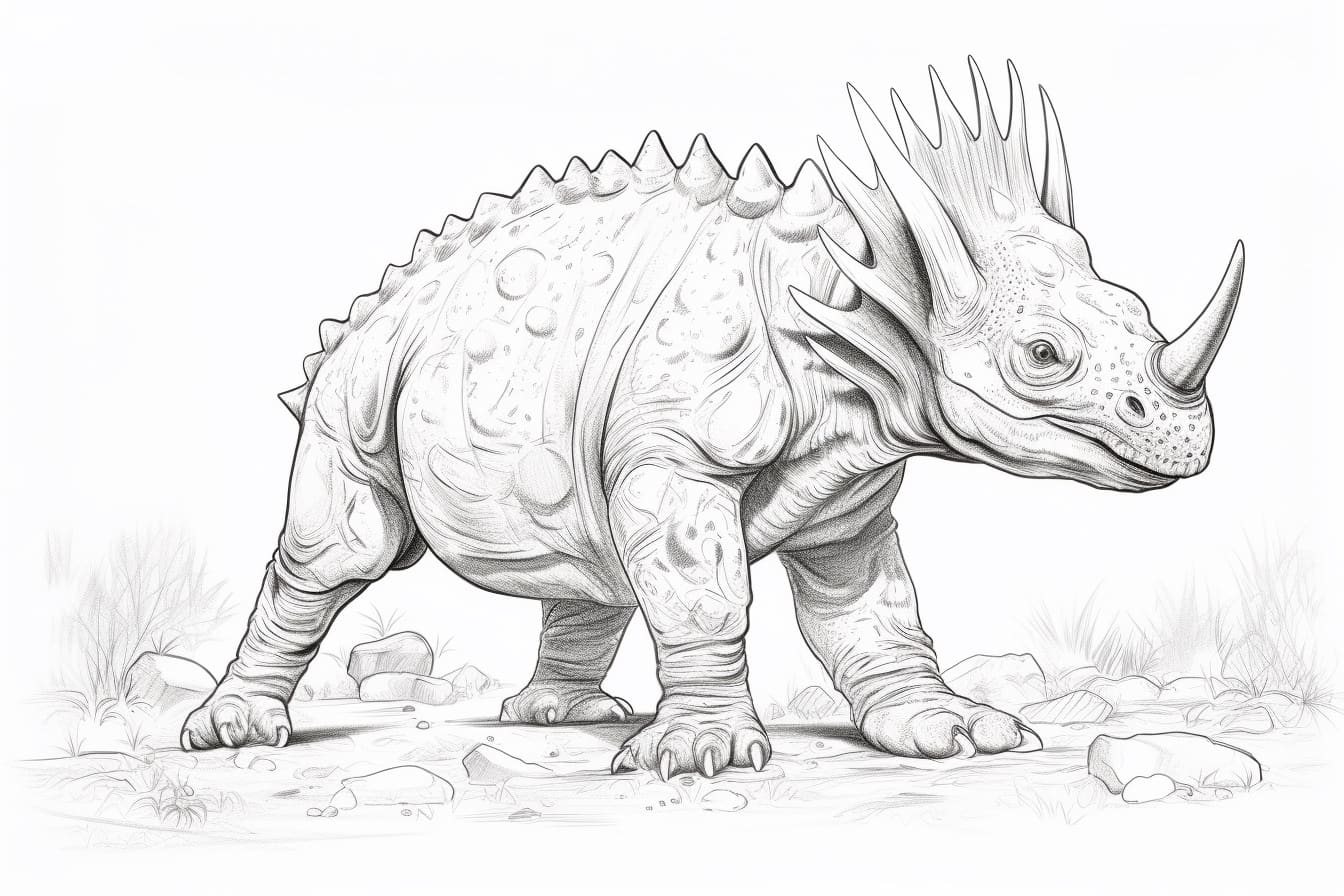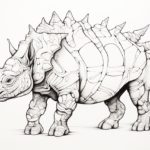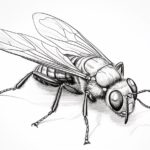
Sinoceratops, a captivating herbivorous dinosaur from the Late Cretaceous period, offers a unique canvas for aspiring artists looking to hone their drawing skills. Known for its eye-catching appearance, this dinosaur features a large frill adorned with formidable spikes and a distinctive single horn on its snout. The challenge of capturing the intricate details and powerful presence of the Sinoceratops in your artwork is sure to make the process both rewarding and engaging.
As you embark on this artistic journey, you’ll delve into the key characteristics that define this incredible creature, including its muscular build and striking facial features. Whether you’re a novice or a seasoned artist, this guide aims to provide you with practical tips and techniques to effectively depict Sinoceratops in your drawings. Embrace the opportunity to unleash your creativity and bring this magnificent dinosaur to life on paper, creating a visual masterpiece that showcases both your talent and your appreciation for these ancient wonders.
Get ready to explore step-by-step instructions that will help you capture the essence of the Sinoceratops. With the right materials and a willingness to experiment, you’ll soon find yourself transforming simple lines and shapes into a vivid representation of this prehistoric giant. Let’s dive in and discover the various facets of drawing the Sinoceratops, where learning and artistic expression meet!
Materials Required
To draw a Sinoceratops, you will need the following materials:
- Drawing paper or sketchbook
- Pencil for sketching and outlining
- Eraser for correcting mistakes
- Fine liners or pens for adding details
- Colored pencils or markers for coloring
- Reference images of Sinoceratops for accuracy and inspiration
With these materials, you can create a detailed and realistic drawing of a Sinoceratops.
How to Draw a Sinoceratops: a Step-by-step Guide
Step 1: Gather Your Materials
Gather the necessary materials to start drawing your Sinoceratops. You will need a pencil, eraser, paper, and reference images of a Sinoceratops to help guide you through the drawing process.
Step 2: Start with Basic Shapes
Begin by sketching the basic shapes of the Sinoceratops. Start with an oval shape for the body and a smaller oval for the head. Add a larger oval for the frill on the head and a smaller oval for the horn on the nose.
Step 3: Refine the Body Shape
Refine the body shape by adding more details. Sketch the legs using simple lines and add the tail at the back of the body. Make sure to pay attention to proportions and positioning to ensure the Sinoceratops looks anatomically correct.
Step 4: Add Facial Features
Start adding the facial features of the Sinoceratops. Draw the eye, nostril, and mouth with attention to detail. Add the signature frill around the head and the horn on the nose to give your drawing a realistic look.
Step 5: Detail the Skin Texture
Add details to the skin texture of the Sinoceratops to make it look more realistic. Use small, overlapping lines to create the scales and wrinkles on the body. Pay attention to the direction of the lines to give a sense of depth and dimension to your drawing.
Step 6: Refine and Erase
Go over your drawing and refine any areas that need more detail or adjustment. Use your eraser to clean up any unnecessary lines or smudges to make your Sinoceratops drawing look polished and professional.
Step 7: Final Touches
Add final touches to your drawing, such as shading to give your Sinoceratops a more three-dimensional look. Use light and shadow to create depth and volume in your drawing. Consider adding a background or additional details to enhance the overall composition.
Step 8: Review and Make Adjustments
Take a step back and review your drawing of the Sinoceratops. Make any final adjustments or corrections to ensure that your drawing accurately represents the prehistoric creature. Congratulations on completing your Sinoceratops drawing!
Tip: To effectively capture the unique features of Sinoceratops, start by utilizing a reference image that highlights its distinct anatomy, particularly the frill and horn. Begin your drawing with light pencil guidelines to establish the basic shapes and proportions, focusing on the large head and muscular body. When detailing the frill, use varied line weights to convey depth and texture; heavier lines can outline the spikes while lighter strokes can suggest the skin’s texture. Consider using colored pencils or markers to enhance the vibrant colors of its skin and frill, adding layers to bring your drawing to life. Don’t forget to pay attention to the shading around the horn and facial features, as this will add realism and dimensionality to your artwork.
Conclusion
In conclusion, mastering the art of drawing a Sinoceratops requires attention to detail, patience, and practice. By following the step-by-step instructions outlined in this article, artists can create a stunning representation of this prehistoric creature. Remember to experiment with different techniques, shading, and textures to bring your Sinoceratops drawing to life. With dedication and perseverance, anyone can achieve impressive results and continue to hone their skills in the captivating world of art.
Fun Facts About Sinoceratopss
- Sinoceratops was a herbivorous dinosaur that lived during the Late Cretaceous period, around 72-66 million years ago.
- It was a member of the ceratopsian family, known for their distinctive frills and horns.
- Sinoceratops had a large frill on the back of its skull, which was adorned with large, forward-curving horns over its eyes.
- Its name, Sinoceratops, means “Chinese horned face,” and it was named after the country where its fossils were discovered.
- Sinoceratops is believed to have been a relatively large dinosaur, reaching lengths of around 20 feet (6 meters) and weighing up to 2-3 tons.
- Like other ceratopsians, Sinoceratops likely used its horns and frill for display and defense, as well as possibly for species recognition.
- Fossils of Sinoceratops have been found in China, specifically in the Shandong Province, making it one of the few ceratopsians known from Asia.
- Sinoceratops is considered a transitional form between more basal ceratopsians and later, more derived forms like Triceratops.
- It is believed that Sinoceratops may have lived in herds and grazed on vegetation in a similar manner to modern-day herbivores.
- The discovery of Sinoceratops has helped scientists better understand the diversity and evolution of ceratopsian dinosaurs during the Late Cretaceous period.
Suggestions for Scenes and Settings for Sinoceratops Drawings
Certainly! Here are some specific suggestions for scenes and settings for your Sinoceratops drawings:
- Jurassic Safari: Place the Sinoceratops in a lush, prehistoric jungle setting with ferns, ancient trees, and a gentle stream running through the background.
- Volcanic Landscape: Draw the Sinoceratops against a backdrop of an active volcano, with lava flows and ash clouds in the distance, creating a dramatic and dynamic scene.
- Dusk in the Desert: Picture the Sinoceratops silhouetted against a setting sun in a desert landscape, with cacti and sand dunes adding to the atmosphere.
- Underwater Oasis: Imagine the Sinoceratops swimming gracefully in a crystal-clear, tropical ocean with colorful coral reefs and schools of fish surrounding it.
- Ancient Ruins: Place the Sinoceratops in front of ancient ruins like those of a Mayan temple, overgrown with vines and surrounded by mystery and intrigue.
- Arctic Tundra: Show the Sinoceratops in a snowy landscape with icy cliffs and polar bears in the distance, highlighting its adaptation to different environments.
- Enchanted Forest: Create a whimsical scene with the Sinoceratops in a magical forest filled with glowing mushrooms, fireflies, and ethereal light filtering through the canopy.
- Celestial Skies: Illustrate the Sinoceratops under a starry night sky with the Milky Way stretching overhead, conveying a sense of wonder and vastness.
- Futuristic Cityscape: Place the Sinoceratops in a futuristic city setting with sleek skyscrapers and flying cars, blending the ancient and modern worlds in a unique way.
- Time Travel: Combine different time periods by depicting the Sinoceratops in a time-travel scenario, such as standing in a portal with glimpses of past and future landscapes around it.
These ideas should spark your creativity and help you explore different atmospheres and narratives for your Sinoceratops drawings. Have fun bringing these scenes to life on paper!









